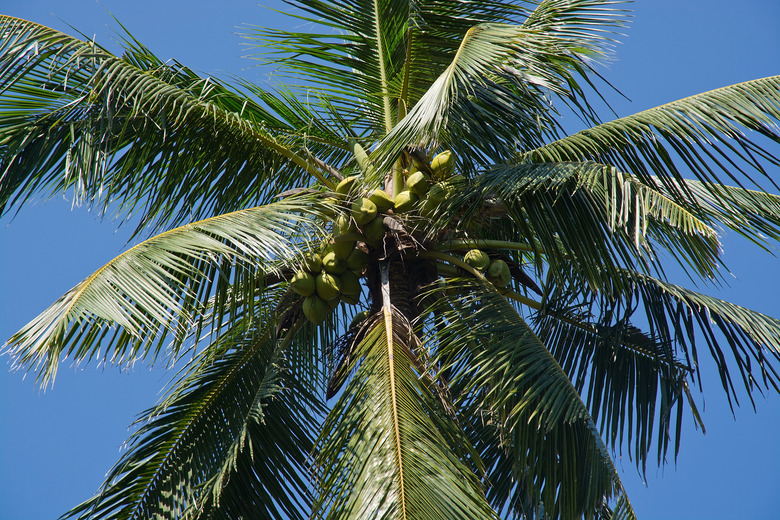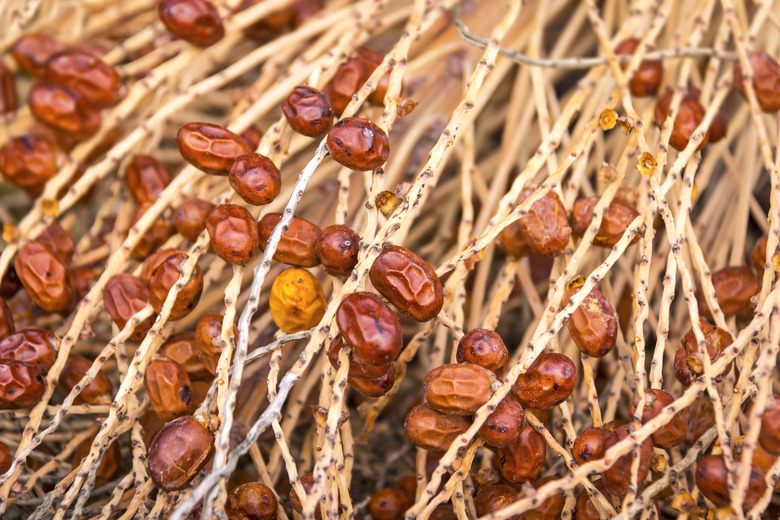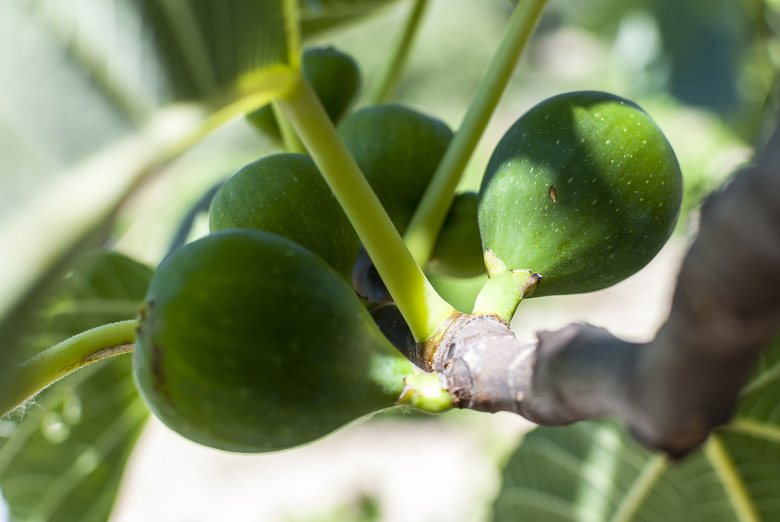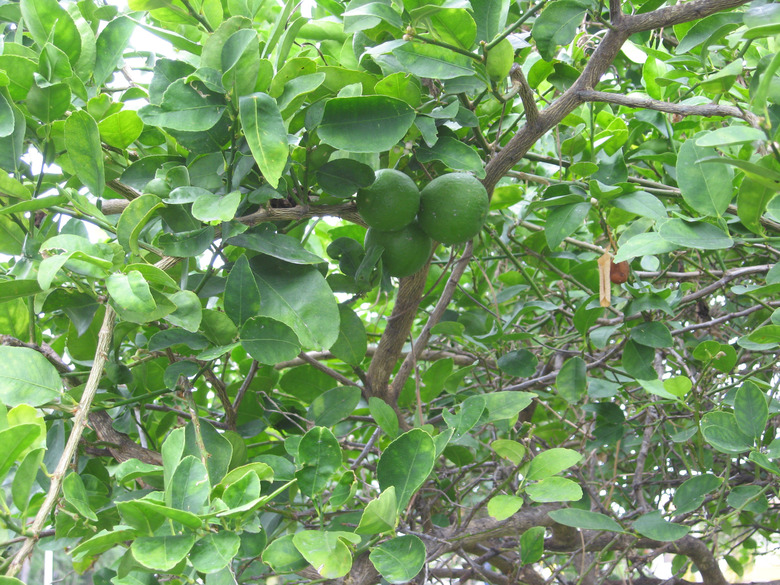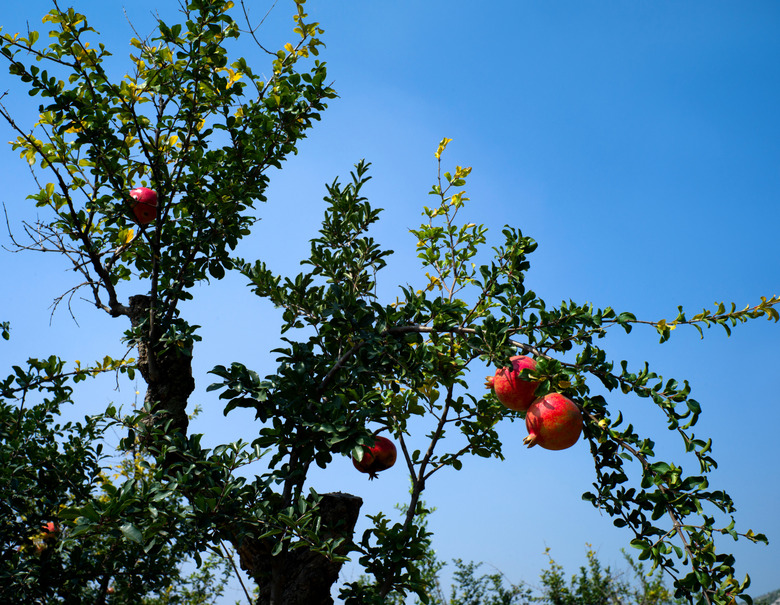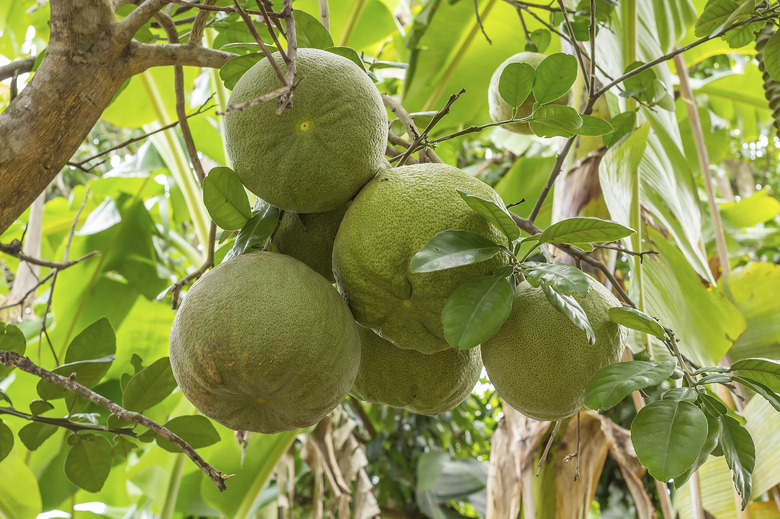Salt-Tolerant Fruit Trees
The increasing saline in the soil due to brackish ground water, use of recycled water or the proximity to the ocean is problematic when planting your personal orchard. Many trees are sensitive to salt and cannot tolerate saline soil or salt spray. The salts burn their sensitive roots and foliage. Despite the damage caused by salt, there are a few salt-tolerant fruit trees that you can add to your garden.
Coconut Palm
The coconut palm (Cocos nucifera) is one of the most salt-tolerant fruit trees that you can grow in the garden. Technically, the coconut is a drupe, which is a fruit with a hard outer covering over the seed. The coconut palm can only tolerate freezing temperatures for a few hours. It thrives in the warm temperatures of U.S. Department of Agriculture plant hardiness zones 10 through 11.
Date Palm
The true date palm (Phoenix dactylifera L.) is a drought-resistant, desert palm. Native to North Africa, the date palm is used for both its fruits and as a landscape plant in USDA zones 9 through 11. It has a high tolerance for salty soils and salt spray.
Fig
Cultivated for over 5,000 years, the fig (Ficus carica) is a native of the Mediterranean. Figs tolerate **drought**, saline soils and salt spray and can be grown in coastal regions. Most figs thrive in USDA zones 8 through 10. While the fig may freeze to the roots, it quickly resprouts in spring, producing a crop of figs on the new growth.
Warning
The leaves and milky sap of fig trees can cause an allergic reaction in sensitive individuals. Wear protective gear, such as safety glasses, gloves, long pants and a long-sleeved shirt when working around the tree.
Key Lime
The Key lime (Citrus aurantiifolia), also known as the Mexican lime and West Indies lime, provides the tart limes for sweet treats, such as Key lime pie. Native to Southeast Asia, it thrives in USDA zones 9 through 11. It is moderately tolerant of salty soils and salt spray.
- The true date palm is a drought-resistant, desert palm.
- Native to North Africa, the date palm is used for both its fruits and as a landscape plant in USDA zones 9 through 11.
Pomegranate
Grown in Bermuda, Israel, California and other warm climates, the pomegranate (Punica granatum) requires regular irrigation to fruit. In Israel, the shrubby trees are regularly watered with brackish water. Gardeners in USDA zones 8 through 11 can plant the 6- to 15-foot-tall tree near a doorway or in a courtyard garden, where they can enjoy the flowers and fruits.
Pummelo
The large heavy fruits of the pummelo (Citrus maxima) are a treat in China and Southeast Asia. The thick rind is candied, while the fruits are enjoyed fresh. Its native habitat is in Polynesia and the Malay Peninsula. It thrives in USDA zones 9 through 10. It tolerates brackish water, such as reclaimed water, and poor drainage.
References
- Plantation Organic Gardens Cayman Islands: Salt Tolerance of Various Tropical and Sub-tropical Fruit, Nut and Spice/Herb Trees: Putting the Right Plants in the Right Locations
- Floridata: Cocos Nucifera
- University of California, Division of Agriculture and Natural Resources: Landscape Plant Selection Guide for Recycled Water Irrigation
- Urban Forest Ecosystems Institute: Key Lime
- Floridata: Citrus Maxima
- Tropical Fruit Cookbook; Marilyn Rittenhouse Harris
- California Figs: About Figs
